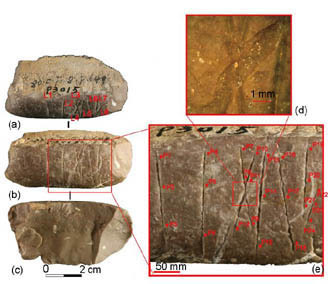In this paper he and his co-authors discuss a symbol found at several Mesoamerican sites consisting of a cross concentric with one or more circles, with the arms of the cross usually extending beyond the circle(s). These symbols were usually made by pecking a series of dots into either a rock face or the floor of a room, and their alignments appear to have often been significant. They are most common at Teotihuacan, where they were generally oriented with the arms of the cross aligned with the city’s street grid. This orientation had led some earlier authors to interpret them as surveying marks used in laying out the streets. The authors of this paper consider that interpretation a possibility, but not necessarily the only one. There are other examples of these symbols in sites near Teotihuacan that have other orientations, some of which seem to align with prominent landmarks on the horizon that may have been used in astronomical observations.

 Your new post is loading...
Your new post is loading...
 Your new post is loading...
Your new post is loading...













"This discovery provides important material for the study of symbolic and cognitive capability of humans in the Late Paleolithic of East Asia.
Read more at: http://phys.org/news/2012-12-engraved-stone-artifact-shuidonggou-paleolithic.html#jCp